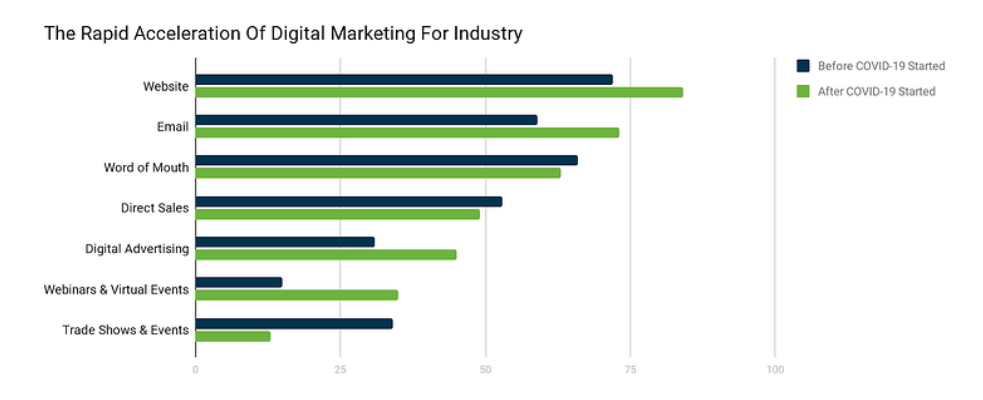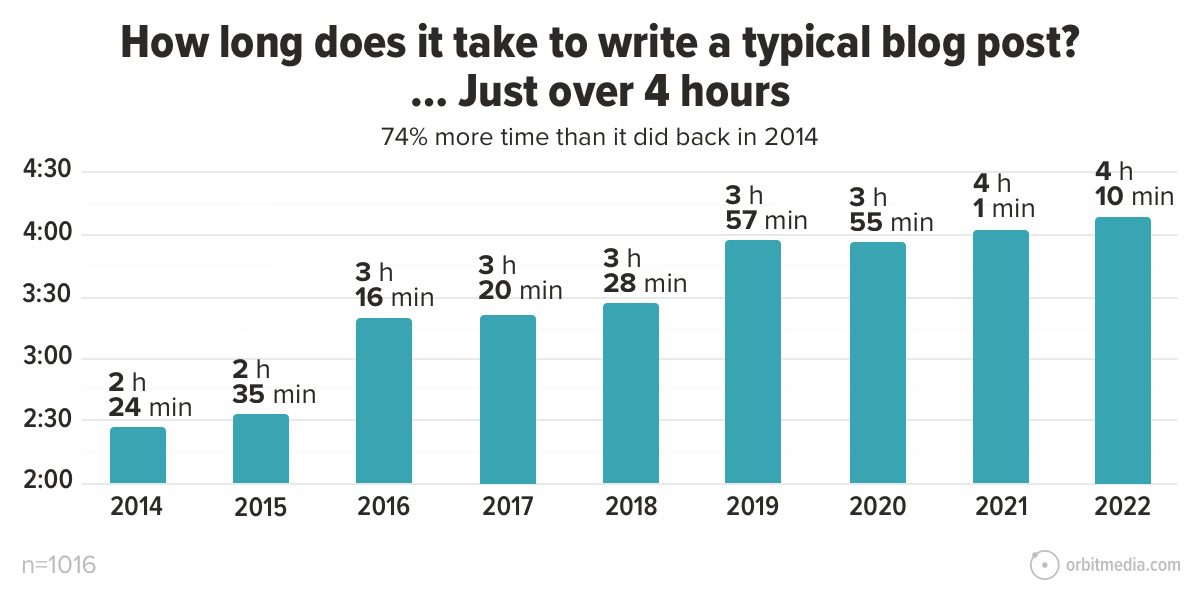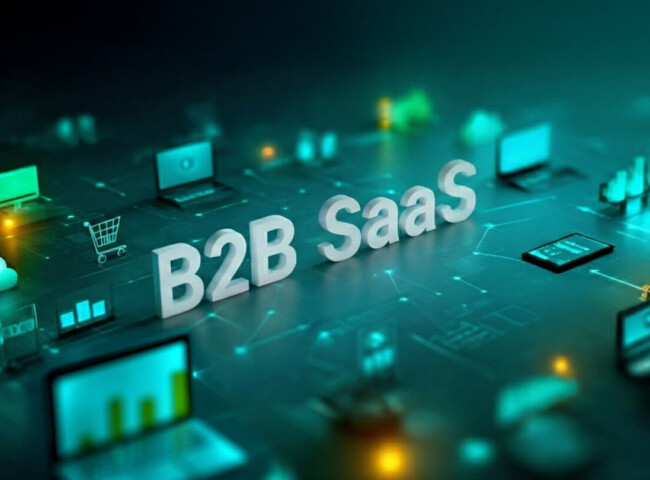Keys to industrial B2B marketing

Industrial B2B marketing is based on omnichannel strategies (on and offline) aimed at a more technical and professional audience, which helps the business model to be more competitive as it supports the commercial and/or sales department.
Why is this type of marketing being talked about so much? Data shows that the audience of industrial companies is increasingly digital: according to Statista, 46% of B2B companies plan to increase their investment in content marketing in the next 12 months.
As you know, this sector tends to be more demanding than B2C because the products and services tend to be more technical, as the audience demands:
- Information on products and services
- Technical specifications
- Customised content by sector, need or buyer persona
- Communication, conditions or transparency on delivery times
We can no longer ignore the digitisation of users (regardless of the sector in which they work), especially after COVID-19, where it was noted that there was a 12% increase in business opportunities for manufacturers using their website, as we can see in the Thomas Insight study.

1. What is Industrial Marketing for?
‘Before interacting with a website, the average B2B buyer conducts 12 different online searches.’
Google Tweet
When we talk about ‘doing industrial marketing’ we talk about putting the customer at the centre of the strategy.
At SHERIDAN we continue to see cases where industrial companies generate content talking only about themselves (numerous press releases, changes in the organisation, information on internal training, volunteering…) forgetting how they can help their customers through their products or services. Industrial marketing should be used to create long-term relationships with your customers and suppliers, positioning your solutions as unique in the market.
In short, we can say that industrial and/or construction B2B marketing should serve to:
- Reaching more difficult market niches
- Solve your clients’ goals, problems, objectives or challenges.
- Generating brand recognition
- Build medium and long-term relationships with your customers and suppliers.
In addition to the above points, buyers in this segment do a lot of research on the internet and we have to be there to help them find the optimal solution.
2. Industry challenges in marketing
Finding a marketing agency that understands the essence of your industry, speaks the same language, is able to reach your target audience, understands your product and adds value… It’s complicated but not impossible.
Our team understands the needs and constraints that may arise during the course of a digital project, such as:
- The generation of technical and specific content.
- Limited resources in the development of content or creative pieces.
- Targeting: very niche. Sometimes the audience is in off or dark channels.
- Not digitalised. The first steps towards digitalisation are beginning to be taken (CRM, SEO, SEM…) but we necessarily find ourselves with digital profiles.
- The core of the business is not marketing (‘cobbler to your shoes’): we understand that the priority is to satisfy customer needs. For this reason we find companies that do not have a marketing department, it is merged with the commercial department or it is outsourced.
- Sales cycles are long, so we must be present throughout the buying process to help buyer personas make a decision.
Generating valuable content, the most difficult challenge
Generating quality content is difficult, especially in B2B, where you need data to support and prove the veracity of published articles, podcasts, infographics or reports.
Just to give you an idea, it takes an average of almost 4 hours to write a specific and technical article. To this time, we must add the creativities to be able to promote it on different channels such as LinkedIn.
It is normal that this is one of the main reasons why companies decide to outsource this process.

Source: https://www.orbitmedia.com/blog/blogging-statistics/
3. How to do industrial marketing
To start implementing B2B marketing strategies in the construction industry, we must be clear about what our potential customers expect, want and need. To do so, we should at least reflect on our website:
- Our information about our products and/or services.
- Technical specifications.
- Customized content according to need, sector…
- Communication / conditions / transparency on deadlines and delivery times.
Thanks to this information on your website or social networks, your users will find the minimum necessary information to compare you with other similar solutions.
Once you have determined your buyer personas and what they expect from you, you can focus on setting the project’s project objectiveswhich could be the following:
- Expanding market share
- Positioning specific brands or products within a niche
- Growing your database with qualified prospects
- Get more organic traffic
- Improve your brand in search engines to get more visibility
The objectives should be ambitious but realistic, so that they can be met within the allocated budget. We recommend setting three or four objectives per quarter.
Depending on your objectives, we offer different services services adhoc so you can incorporate them into your omnichannel strategy and nativize your brand:
- Communication and PR: from press offices to corporate events
- Performance marketing: from programmatic to social marketing
- Content Marketing: from graphic design to TV advertisements
4. Useful marketing tools
Another important challenge we will face in marketing is to be able to measure the results in order to know whether we are meeting our objectives or not.
In this section we will name some tools or software that we recommend to get the most out of your efforts:
- CRM with Marketing Automation: HubSpot, Marketing Cloud, Activecampaign.
- Dashboards: Looker Studio (formerly known as Google Data Studio), Data Box.
- Chatbots: Intercom, Oct8ne.
- Interactive Content: Outgrow, Typeform.
- Webinars: Zoom, Gotowebinar, On24.
Request your free consultation with our experts right here
{“@context”:”https://schema.org”,”@type”:”FAQPage”,”mainEntity”:[{“@type”:”Question”,”name”:”¿Por qué el marketing B2B industrial requiere un enfoque diferente?”,”acceptedAnswer”:{“@type”:”Answer”,”text”:”Porque las decisiones de compra en la industria son complejas, involucran varios perfiles técnicos y se basan en datos y confianza más que en la emoción. Un enfoque especializado permite comunicar el valor del producto, destacar la innovación y construir relaciones comerciales a largo plazo.”}},{“@type”:”Question”,”name”:”¿Qué papel tiene el contenido en el marketing industrial?”,”acceptedAnswer”:{“@type”:”Answer”,”text”:”El contenido es clave para educar al mercado y demostrar experiencia. Publicar guías técnicas, casos de éxito y artículos especializados ayuda a posicionar la marca como referente y a acompañar a los clientes durante todo el proceso de decisión.”}},{“@type”:”Question”,”name”:”¿Cómo pueden las industrias generar más oportunidades a través del marketing digital?”,”acceptedAnswer”:{“@type”:”Answer”,”text”:”Mediante estrategias combinadas de SEO, inbound marketing y campañas en LinkedIn. Estas herramientas permiten aumentar la visibilidad, atraer leads cualificados y convertir contactos técnicos en oportunidades reales de negocio.”}}]}



